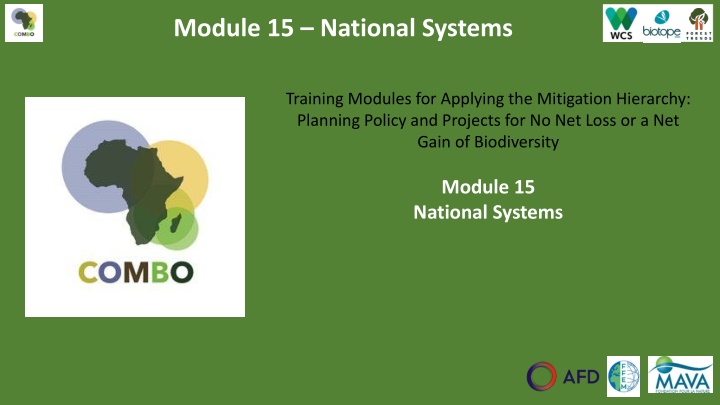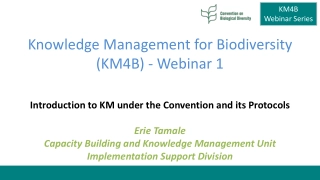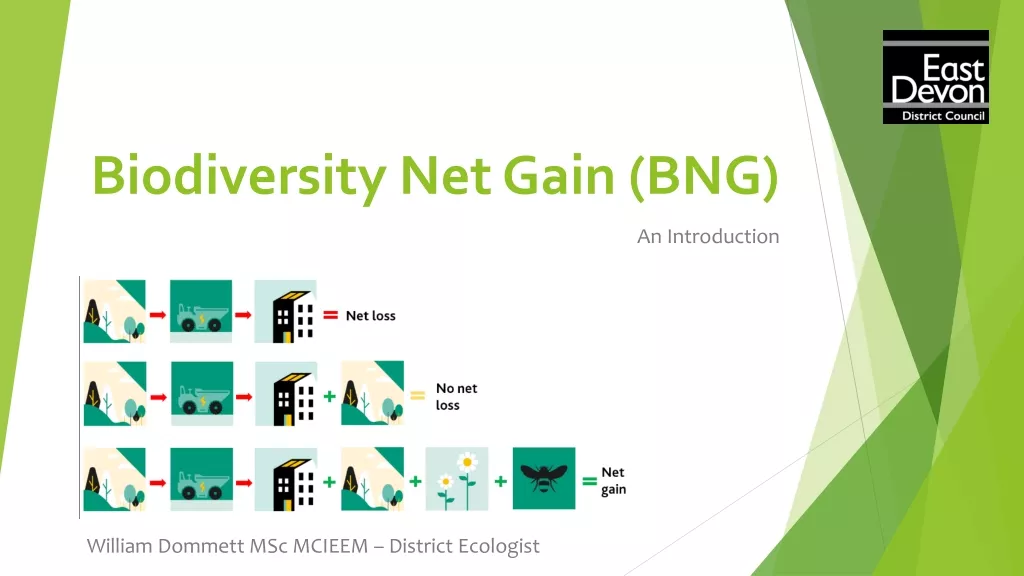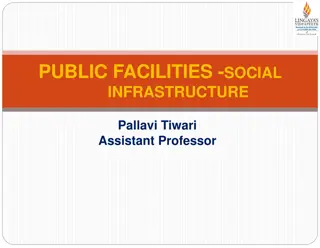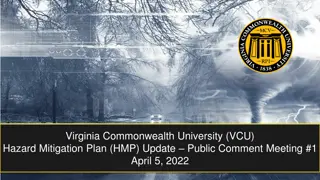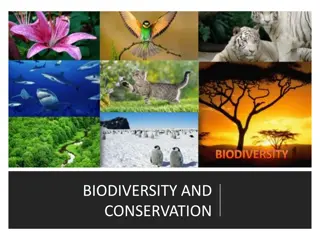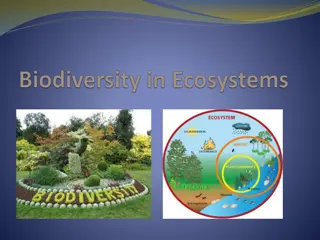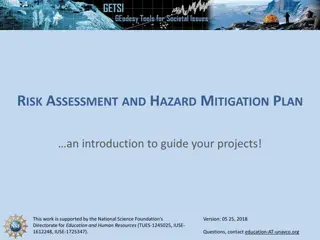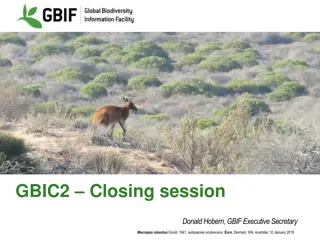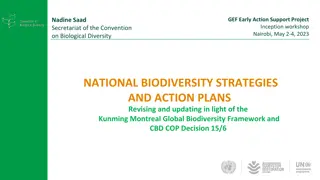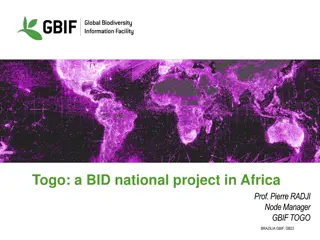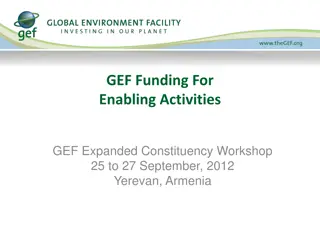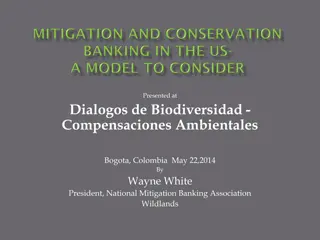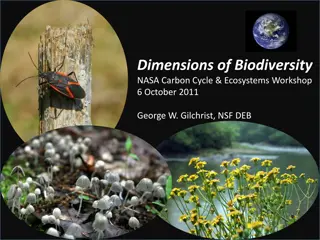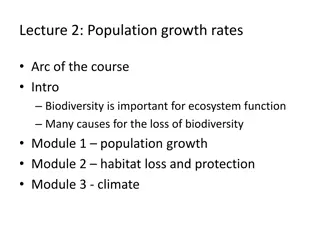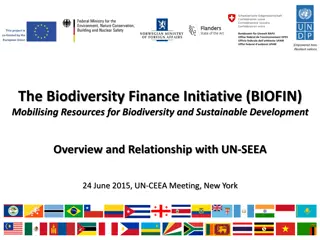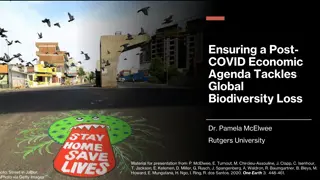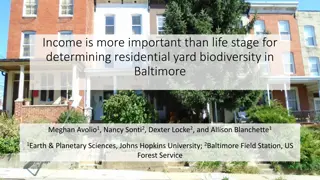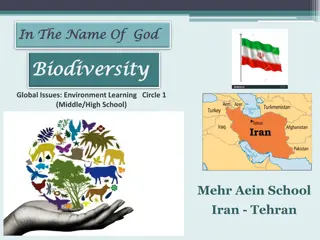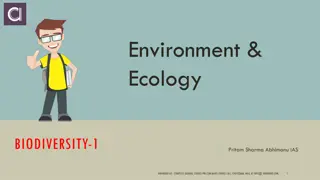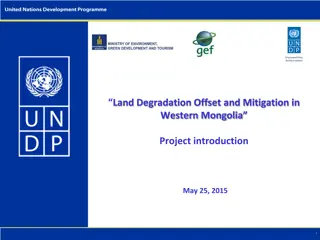Applying Mitigation Hierarchy for Biodiversity Net Gain
National systems training modules for planning policies and projects to achieve no net loss or a net gain of biodiversity. Learn about examples from COMBO countries, government roadmap, policies in Mozambique and Uganda, and more.
Download Presentation

Please find below an Image/Link to download the presentation.
The content on the website is provided AS IS for your information and personal use only. It may not be sold, licensed, or shared on other websites without obtaining consent from the author.If you encounter any issues during the download, it is possible that the publisher has removed the file from their server.
You are allowed to download the files provided on this website for personal or commercial use, subject to the condition that they are used lawfully. All files are the property of their respective owners.
The content on the website is provided AS IS for your information and personal use only. It may not be sold, licensed, or shared on other websites without obtaining consent from the author.
E N D
Presentation Transcript
Module 15 National Systems Training Modules for Applying the Mitigation Hierarchy: Planning Policy and Projects for No Net Loss or a Net Gain of Biodiversity Module 15 National Systems 1
Planning BNG/NNL: Example of national system This section only reviews methods and examples from the COMBO countries See Module 16 - System Example for the example of a state system: Victoria, Australia 2
Planning BNG/NNL: Government roadmap See the Government Roadmap Module for an explanation and tool for systematic planning for BNG/NNL at the national or state level This module gives the overall planning context for using the roadmap and gives examples from the COMBO countries 3
BNG/NNL policy in Mozambique BNG/NNL policy in Mozambique - - 2019 2019 Concepts associated with NNL, Net Gain, etc in Mozambique s Regulation of the Conservation Law COMBO ongoing partnership with MITADER, BIOFUND & BIOFIN to develop the guidance and specific regulation for implementing the mitigation hierarchy including biodiversity offsets (as required by the EIA Decree). Excel tool showing how these topics are currently considered in the national legislation Coordination between ANAC, DINAB and FNDS to determine how to proceed inside PAs and buffer zones (to avoid duplication for developers between financial compensation under the EIA Decree and compensation required by the Conservation law) COMBO provided legal advice on liability transfer associated with offsets (supported by BIOFIN) 4
BNG/NNL policy in Uganda BNG/NNL policy in Uganda - - 2019 2019 NNL phrases in the policy and review of the Environmental Bill 2017 (now passed) at the request of the Ministry of Water and Environment (MWE) and National Environmental Management Authority (NEMA). Principal policy recommendations (including for draft EIA Regs) presented to office of the Prime minister. Follow up coming with the Multi sectoral committee: Strengthen NNL/NG principles: need mandatory legal requirement for developers to apply the mitigation hierarchy and ensure NNL/NG. The National Environment Bill 2016 (passed) and Draft National Environment (Environment Assessment) Regulations have provisions to this effect. Including the requirement in sectoral laws would help enforce NNL/NG. Improve the ESIA Process: Laws & regs on EIA and SEA should explicitly provide for biodiversity assessments, the scientific methods for conducting them and the timeframe to enable effective biodiversity assessment. The MH/NNL legal provisions should be supported by comprehensive guidelines explaining concepts and giving a step-by-step approach to the implementation. Based on the broad guidelines, each sector should develop sector- specific EIA guidelines. Guidelines for Strategic Environmental Assessment needed as a framework for the various sectors. Consideration of biodiversity and potential impacts at the landscape scale. (i) strategic land use planning should be considered in landscapes, (esp where multiple infrastructure and industry projects so indirect and cumulative impacts); and (ii) industry should consider impacts across its entire Area of Influence. Identification of priority biodiversity across the appropriate spatial scale, notably a project Area of Influence (esp to tackle indirect and cumulative impacts). Identified national biodiversity priorities can be used to aid land use planning. 5
BNG/NNL policy in Madagascar BNG/NNL policy in Madagascar - - 2019 2019 Proposal for amending the MECIE Law presented by COMBO team to Min. of Forests and Environment, March 2019. Report of expert nominated by ONE to analyse the MECIE law anticipated in 2019. COMBO team plans to help draft the accompanying guidelines and EIA Regulation. New Minister s goals include restoration of 60k ha of forest , which may entail more support for regulated NNL. COMBO team is helping coordinate work on the MECIE amendment by several projects affected by it. 6
BNG/NNL policy in Guinea BNG/NNL policy in Guinea - - 2019 2019 Guinea s Environment Code, October 2018 now refers to the mitigation hierarchy including biodiversity offsets Sectoral guidance (esp mining sector) under development. E.g. Draft Action Plan for the implementation of the National Sectorial Communication on Corporate Social Responsibility in the mining sector proposes NNL / NG objective. Draft national strategy outline by COMBO nearly ready 7
Planning a national system: Whats needed This document covers law, policy, scientific and technical guidelines and data, relationships with a variety of stakeholders, and coordination and capacity building in government. It lists priority roles for governments, companies, banks, civil society and conservation groups and points readers to tools and examples for their own circumstances. 8 8
